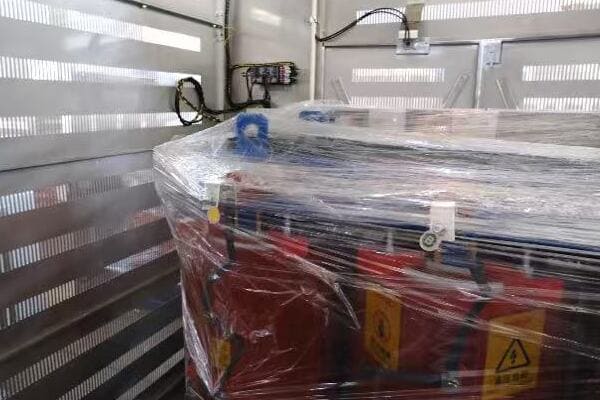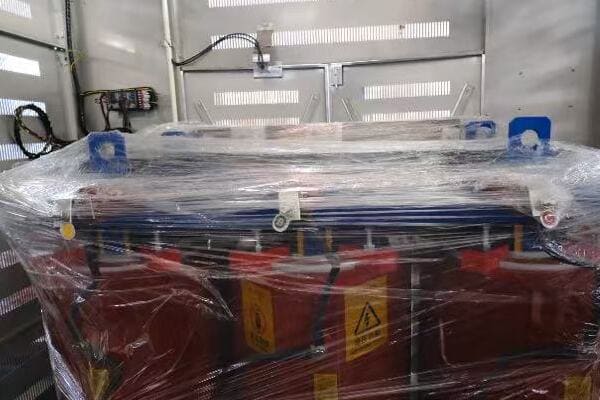Electrical Transformer Box Safety: Installation Guidelines and Best Practices?
Are you worried about the safety risks involved in installing electrical transformer boxes? You’re not alone. Many professionals in the field face challenges when it comes to ensuring safe installation practices. But with the right guidelines, these risks can be minimized.
Electrical transformer box installation safety involves thorough pre-installation checks, proper grounding and insulation, use of personal protective equipment, consideration of environmental factors, and post-installation security measures. Following these guidelines ensures the safety of workers and the public, and maintains the integrity of the electrical system.
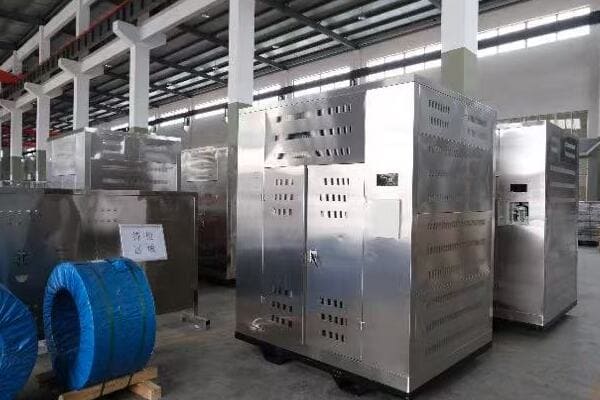
In this article, I’ll guide you through the essential safety practices for installing electrical transformer boxes. We’ll cover everything from pre-installation checks to post-installation measures. Whether you’re a seasoned electrician or new to the field, these guidelines will help you ensure a safe and efficient installation process.
Pre-Installation Safety Checks: Essential Steps Before Transformer Box Setup?
Have you ever started a job only to realize you weren’t fully prepared? When it comes to transformer box installation, this kind of oversight can be dangerous. What are the crucial checks you need to make before you even begin the setup process?
Pre-installation safety checks for transformer boxes include site assessment, equipment inspection, voltage testing, and clearance verification. These steps ensure the installation area is safe, the equipment is in good condition, power sources are properly identified, and there’s adequate space for safe installation and future maintenance.
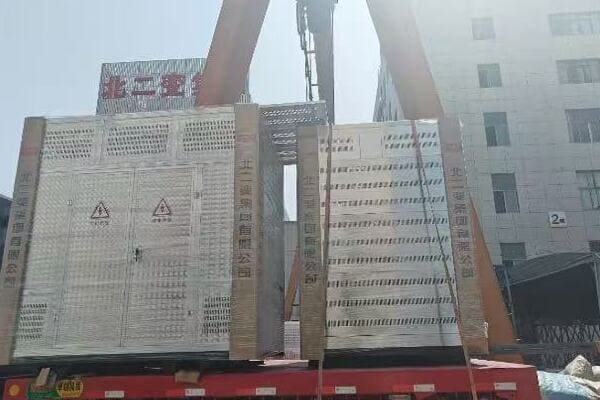
Diving Deeper into Pre-Installation Safety Checks
Let’s break down the essential pre-installation safety checks:
1. Site Assessment
Before any equipment is brought in, a thorough site assessment is crucial. This involves:
- Checking for potential hazards like overhead power lines or underground utilities
- Assessing the ground stability and drainage
- Evaluating accessibility for installation equipment and future maintenance
I once worked on a project where we skipped a detailed site assessment. We later discovered underground water pipes that complicated our installation process. This taught me the importance of thorough site evaluation.
2. Equipment Inspection
Never assume new equipment is flawless. Always inspect:
- The transformer box for any shipping damage
- All accompanying parts and tools for completeness and condition
- The transformer’s oil level and check for any leaks
3. Voltage Testing
Before any work begins:
- Verify the voltage of incoming power lines
- Ensure all nearby circuits are de-energized and locked out
- Use proper voltage testing equipment and techniques
4. Clearance Verification
Adequate clearance is vital for safety and maintenance:
- Check local codes for required clearances around the transformer
- Ensure there’s enough space for ventilation and heat dissipation
- Verify accessibility for maintenance and emergency situations
Here’s a checklist table for pre-installation safety checks:
| Check Category | Specific Tasks | Importance |
|---|---|---|
| Site Assessment | Hazard identification, ground stability | Critical |
| Equipment Inspection | Damage check, parts inventory | High |
| Voltage Testing | Power line verification, circuit de-energizing | Critical |
| Clearance Verification | Space requirements, accessibility | High |
In my experience, one of the most overlooked aspects of pre-installation checks is considering future needs. I remember a case where a transformer was installed without accounting for the area’s growth potential. Within a few years, the space around it became cramped, making maintenance difficult and potentially unsafe.
Another crucial point is the importance of documenting these checks. I always insist on a detailed checklist that’s filled out and signed off before any installation begins. This not only ensures thoroughness but also provides a valuable record in case of future issues or audits.
Weather conditions should also be part of your pre-installation assessment. I once had to postpone an installation due to unexpected heavy rains. The wet conditions would have made the work unsafe and could have compromised the equipment. Always check the weather forecast and plan accordingly.
Communication with other utilities and stakeholders is another vital pre-installation step. In one project, we coordinated with the local gas company to mark their lines clearly before we began work. This extra step prevented potential disasters and showed the importance of inter-utility cooperation.
Lastly, don’t forget to review and understand the manufacturer’s installation guidelines thoroughly. Each transformer model may have specific requirements or precautions. I make it a point to have a team briefing where we go over these guidelines together, ensuring everyone is on the same page before we start the installation.
By meticulously following these pre-installation safety checks, we set the foundation for a safe and successful transformer box installation. Remember, in electrical work, preparation is not just about efficiency – it’s about preserving lives and preventing accidents.
Proper Grounding and Insulation: Ensuring Electrical Safety During Installation?
Have you ever wondered why some electrical installations fail despite using high-quality equipment? Often, the culprit is improper grounding or insulation. But how can you ensure these critical aspects are handled correctly during transformer box installation?
Proper grounding and insulation in transformer box installation involve creating a low-impedance path to earth, using appropriate insulating materials, and ensuring all connections are secure. This includes installing ground rods, using proper cable insulation, and following specific grounding techniques for different transformer types.
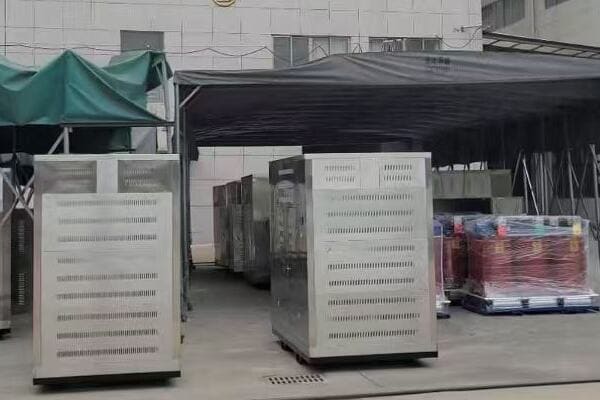
Exploring Grounding and Insulation Techniques
Let’s delve into the key aspects of grounding and insulation:
1. Grounding Basics
Proper grounding is crucial for safety and equipment protection:
- Install ground rods to the required depth (typically 8 feet or more)
- Use copper-clad or galvanized steel rods
- Ensure low ground resistance (usually less than 25 ohms)
I once worked on a project where inadequate grounding led to frequent equipment malfunctions. After improving the grounding system, these issues disappeared, highlighting the importance of this often-overlooked aspect.
2. Insulation Considerations
Proper insulation prevents electrical leakage and ensures safety:
- Use insulation materials rated for the voltage level
- Inspect all insulation for damage before installation
- Apply appropriate insulation techniques for connections and terminations
3. Grounding Techniques for Different Transformer Types
- Pad-mounted transformers: Connect to grounding grid or multiple ground rods
- Pole-mounted transformers: Use down leads connected to ground rods
- Vault-type transformers: Connect to building grounding system
4. Insulation Testing
Before energizing:
- Perform insulation resistance tests
- Check for any weak points in the insulation system
- Document all test results for future reference
Here’s a table summarizing grounding and insulation practices:
| Aspect | Key Practices | Importance |
|---|---|---|
| Grounding | Install ground rods, ensure low resistance | Critical |
| Insulation | Use rated materials, inspect for damage | High |
| Transformer-Specific Grounding | Follow type-specific techniques | Critical |
| Insulation Testing | Perform resistance tests, document results | High |
In my experience, one of the most common mistakes in grounding is relying on a single ground rod. I always recommend using multiple rods or a grounding grid for better performance. In one project, switching from a single rod to a three-rod system dramatically improved the grounding effectiveness and reduced electromagnetic interference issues.
Soil conditions play a crucial role in grounding effectiveness. I recall a challenging installation in an area with very rocky soil. We had to use chemical ground rods and a larger grounding grid to achieve the required resistance. It’s always important to consider local soil characteristics in your grounding design.
For insulation, climate considerations are crucial. In a project in a humid, coastal area, we had to use special moisture-resistant insulation materials to prevent degradation over time. This experience taught me the importance of adapting insulation choices to the specific environmental conditions of each installation site.
Another critical aspect is the bonding of metallic parts. I always ensure that all metal components of the transformer installation, including the tank, brackets, and nearby metallic structures, are properly bonded. This practice prevents dangerous touch potentials and ensures that fault currents have a clear path to ground.
Insulation coordination is a concept that’s often overlooked but crucial for system reliability. In one high-voltage installation, we had to carefully select insulation levels for various components to ensure they could withstand both normal operating voltages and potential surge voltages. This involved a detailed analysis of the entire system, from the transformer to connected equipment.
Lastly, it’s important to consider the impact of future changes on grounding and insulation. In a rapidly growing industrial area, we designed the grounding system with expansion in mind, allowing for easy upgrades as new equipment was added. This foresight saved considerable time and resources in subsequent years.
By paying close attention to grounding and insulation during transformer box installation, we not only ensure immediate safety but also lay the foundation for long-term reliability and efficiency of the electrical system. Remember, in electrical work, what you can’t see is often just as important as what you can.
Personal Protection and Equipment: Gearing Up for Safe Transformer Box Handling?
Have you ever wondered if you’re truly prepared to handle the risks involved in transformer box installation? Personal protection is not just about following rules; it’s about ensuring you return home safely every day. But what exactly do you need to stay safe?
Safe transformer box handling requires proper personal protective equipment (PPE) including insulated gloves, safety glasses, hard hats, and flame-resistant clothing. It also involves using the right tools, understanding voltage ratings, and following specific handling procedures for different transformer types.
Essential Personal Protection and Equipment
Let’s break down the key elements of personal protection and equipment:
1. Personal Protective Equipment (PPE)
The right PPE is your first line of defense:
- Insulated gloves rated for the voltage you’re working with
- Safety glasses or face shields to protect against arc flashes
- Hard hats to guard against falling objects
- Flame-resistant clothing to protect from potential fires or arc flashes
I once witnessed a near-miss where a worker’s non-rated gloves almost led to a severe shock. Since then, I’ve been adamant about proper PPE use and regular inspection of safety gear.
2. Proper Tools and Equipment
Using the right tools is crucial for safety and efficiency:
- Insulated tools rated for the voltage level
- Properly calibrated voltage testers and multimeters
- Appropriate lifting and handling equipment for transformer movement
3. Understanding Voltage Ratings
Knowledge is a form of protection:
- Ensure all team members understand the voltage ratings involved
- Use clear labeling and signage to indicate voltage levels
- Provide regular training on voltage safety and awareness
4. Specific Handling Procedures
Different transformer types require different handling approaches:
- Pad-mounted transformers: Use proper lifting techniques and equipment
- Pole-mounted transformers: Ensure secure mounting and proper balance
- Dry-type transformers: Handle with care to prevent damage to windings
Here’s a table summarizing key PPE and equipment:
| Category | Items | Purpose |
|---|---|---|
| Head Protection | Hard hat, safety glasses | Protect against falling objects and debris |
| Hand Protection | Insulated gloves, tool handles | Prevent electrical shock |
| Body Protection | Flame-resistant clothing | Guard against arc flash and fire |
| Foot Protection | Insulated safety boots | Provide electrical insulation and foot protection |
| Tools | Insulated tools, voltage testers | Ensure safe handling of electrical components |
In my years of experience, I’ve learned that PPE is only effective if it’s properly maintained and regularly inspected. I implement a strict PPE inspection routine in all my projects. Once, during a routine check, we discovered a tiny hole in a pair of insulated gloves. Replacing them potentially prevented a serious accident.
Another crucial aspect of personal protection is understanding and respecting the limits of your PPE. I always emphasize to my teams that PPE is the last line of defense, not a license to take unnecessary risks. In one training session, we demonstrated the effects of arc flash on different types of PPE. This visual demonstration dramatically improved the team’s appreciation for proper safety gear.
Proper lifting and handling techniques are often overlooked in transformer installation. I recall a project where we implemented a comprehensive lifting protocol, including the use of mechanical aids and team lifting techniques. This not only improved safety but also reduced the risk of equipment damage during installation.
Climate considerations also play a role in PPE selection. In a project in an extremely hot climate, we had to carefully select PPE that provided necessary protection without causing heat stress. This involved using breathable, flame-resistant fabrics and implementing work-rest cycles to prevent overheating.
Communication is another vital aspect of personal protection. I always insist on clear communication protocols, especially when working with high voltages. Using standardized hand signals and radio communication has proven invaluable in noisy work environments or when visual contact is limited.
Lastly, I can’t stress enough the importance of creating a culture of safety. In every project, I encourage team members to speak up about safety concerns without fear of reprisal. This open communication has led to numerous improvements in our safety practices and has prevented potential accidents.
By prioritizing personal protection and using the right equipment, we not only ensure individual safety but also contribute to a safer work environment for everyone involved in transformer box handling. Remember, in electrical work, your PPE is not just equipment – it’s your lifeline.
Environmental Considerations: Adapting Installation Practices to Different Settings?
Have you ever faced unexpected challenges while installing a transformer box due to environmental factors? Different settings can dramatically affect installation practices, but how do you adapt to ensure safety and efficiency in varied environments?
Adapting transformer box installation to different environments involves considering factors like climate, terrain, wildlife, and local regulations. This may include using specialized equipment for extreme temperatures, implementing flood protection measures, or modifying installation techniques for urban or rural settings.
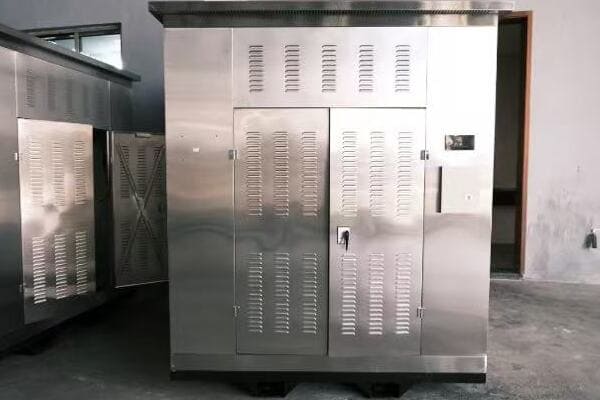
Adapting to Various Environmental Conditions
Let’s explore how to adapt installation practices to different settings:
1. Climate Considerations
Different climates require different approaches:
- Hot climates: Use enhanced cooling systems, heat-resistant materials
- Cold climates: Implement freeze protection, use cold-weather lubricants
- Humid environments: Apply additional corrosion protection, moisture-resistant insulation
I once worked on a project in a tropical climate where standard transformers were overheating. We had to redesign the cooling system and use special heat-resistant insulation to ensure reliable operation.
2. Terrain Challenges
Adapting to various terrains is crucial:
- Mountainous areas: Consider seismic activity, use reinforced foundations
- Coastal regions: Implement salt-spray protection, elevated installations
- Urban settings: Focus on space efficiency, noise reduction
3. Wildlife and Vegetation
Protecting transformers from nature (and vice versa):
- Install wildlife guards to prevent animal intrusions
- Implement vegetation management to prevent interference
- Use eco-friendly materials and practices where possible
4. Local Regulations and Standards
Always adhere to local requirements:
- Research and comply with local environmental regulations
- Adapt installation practices to meet regional standards
- Consider community concerns and aesthetic requirements
Here’s a table summarizing environmental adaptations:
| Environment | Key Considerations | Adaptation Strategies |
|---|---|---|
| Hot Climate | Overheating risk | Enhanced cooling, heat-resistant materials |
| Cold Climate | Freezing issues | Freeze protection, cold-rated components |
| Coastal Areas | Corrosion, flooding | Corrosion-resistant materials, elevated installation |
| Urban Settings | Space constraints, noise | Compact designs, sound insulation |
| Wildlife-Rich Areas | Animal interference | Wildlife guards, strategic placement |
In my experience, one of the most challenging aspects of environmental adaptation is balancing technical requirements with ecological considerations. In a project near a protected wetland, we had to completely rethink our installation approach. We used biodegradable transformer oil and implemented an advanced containment system to prevent any potential environmental contamination.
Extreme weather events pose another significant challenge. I recall a project in a hurricane-prone area where we had to design a transformer installation that could withstand Category 5 winds. This involved not just reinforcing the transformer itself, but also redesigning the entire mounting structure and implementing a rapid disconnect system for emergency situations.
In urban environments, noise reduction often becomes a primary concern. During an installation in a densely populated area, we employed advanced sound-dampening techniques, including specially designed enclosures and vibration isolation mounts. The result was a transformer installation that was barely audible even at close range.
Adapting to high-altitude environments presents unique challenges. In a mountain installation project, we had to account for reduced air density affecting cooling efficiency. This led us to oversize the cooling system and use special insulating materials designed for high-altitude operations.
In areas with extreme temperature fluctuations, material selection becomes crucial. I worked on a project in a desert region where daytime temperatures soared, but nights were surprisingly cold. We had to select materials and design expansion joints that could handle this daily thermal cycling without compromising the integrity of the installation.
Lastly, it’s important to consider the visual impact of transformer installations, especially in scenic or historically significant areas. In one project near a historic district, we worked closely with local architects to design a transformer enclosure that blended seamlessly with the surrounding architecture. This not only satisfied local regulations but also gained community support for the project.
Adapting transformer box installation practices to different environmental settings is not just about overcoming challenges – it’s about creating solutions that harmonize with the local environment. By carefully considering climate, terrain, wildlife, and local regulations, we can ensure that our installations are not only safe and efficient but also respectful of the environments they’re placed in. Remember, a successful installation is one that works well and fits well into its surroundings.
Post-Installation Safety Measures: Securing and Maintaining Transformer Boxes?
Have you ever wondered what happens after a transformer box is installed? The job isn’t over once the installation is complete. In fact, post-installation safety measures are crucial for long-term reliability and safety. But what exactly should be done to secure and maintain these vital components of our electrical infrastructure?
Post-installation safety for transformer boxes involves regular inspections, proper fencing and signage, ongoing maintenance, and emergency response planning. These measures ensure the transformer remains secure, operates efficiently, and poses minimal risk to the public and environment over its entire lifespan.
Essential Post-Installation Safety Measures
Let’s explore the key aspects of securing and maintaining transformer boxes after installation:
1. Physical Security
Protecting the transformer from unauthorized access is crucial:
- Install sturdy fencing or enclosures around the transformer
- Use tamper-resistant locks and security systems
- Implement proper lighting to deter vandalism
I once worked on a project where we underestimated the need for physical security. Within months, we had incidents of copper theft. This experience taught me the importance of robust security measures, even in seemingly low-risk areas.
2. Signage and Warnings
Clear communication of dangers is essential:
- Place visible "Danger – High Voltage" signs
- Include emergency contact information
- Use multilingual signage in diverse communities
3. Regular Inspections
Ongoing checks help prevent issues:
- Conduct monthly visual inspections
- Perform annual thorough examinations
- Use thermal imaging to detect hotspots
4. Maintenance Procedures
Proper upkeep ensures longevity and safety:
- Regularly test and maintain oil levels and quality
- Clean and tighten connections
- Update and replace components as needed
Here’s a table outlining post-installation safety measures:
| Measure | Frequency | Importance |
|---|---|---|
| Physical Security Check | Monthly | High |
| Signage Inspection | Quarterly | Medium |
| Visual Inspection | Monthly | High |
| Thermal Imaging | Annually | High |
| Oil Testing | Annually | Critical |
| Connection Tightening | Annually | High |
In my experience, one of the most overlooked aspects of post-installation safety is community education. I remember a project where we implemented a comprehensive community outreach program, educating local residents about transformer safety. This not only reduced incidents of tampering but also improved community relations and safety awareness.
Emergency response planning is another crucial element of post-installation safety. In one memorable case, we worked with local emergency services to develop a detailed response plan for transformer-related incidents. This included training sessions for first responders on how to safely approach and handle transformer emergencies.
Environmental considerations continue to be important even after installation. I’ve been involved in projects where we implemented advanced oil containment systems and used biodegradable transformer oils to minimize environmental risks. Regular checks of these systems are crucial to ensure they remain effective over time.
The impact of weather on transformer safety cannot be overstated. In areas prone to flooding, we often implement elevated designs and water-resistant features. I recall a project in a flood-prone region where we installed water level sensors and automatic shut-off systems to prevent damage and potential hazards during flood events.
Technological advancements have greatly enhanced our ability to monitor and maintain transformer safety. In recent years, I’ve been implementing smart monitoring systems that provide real-time data on transformer performance and safety parameters. These systems can alert maintenance teams to potential issues before they become critical, significantly improving overall safety and reliability.
Vegetation management is an often-overlooked aspect of post-installation safety, especially for outdoor transformer boxes. I always include a vegetation management plan in our maintenance procedures. Overgrown vegetation can not only interfere with transformer operation but also pose fire risks and hinder emergency access.
Lastly, it’s crucial to maintain up-to-date documentation of all safety measures and maintenance activities. I insist on detailed record-keeping for all transformer installations. This not only helps in tracking the transformer’s history but also proves invaluable during audits or in the event of any incidents.
By implementing comprehensive post-installation safety measures, we ensure that transformer boxes remain secure, efficient, and safe throughout their operational life. Remember, the safety of a transformer installation is an ongoing commitment, not a one-time task.
Conclusion
Electrical transformer box safety is crucial throughout the installation process and beyond. From pre-installation checks to post-installation maintenance, each step plays a vital role in ensuring safety, efficiency, and longevity. By following these guidelines and best practices, we can create safer and more reliable electrical infrastructure.
Free CHBEB Transformer Catalog Download
Get the full range of CHBEB transformers in one catalog.
Includes oil-immersed, dry-type, pad-mounted, and custom solutions.
Quick Message
Request A free quote
We'd like to work with you
- +86 15558785111
- [email protected]
- +86 15558785111
What We Do
CHINA BEI ER BIAN (CHBEB) GROUP, with 218 million in registered capital, originated from Beijing Beierbian Transformer Group. Headquartered in Beijing for R&D, it operates major production bases in Nanjing and Yueqing, producing high-quality products.
Latest Product
address
BeiJing
No 3,RongJing East Road,BeiJing Economic Technological Development Area,BeiJing,China
JiangSu
No 7️Xiangfeng Road,Jiangning,NanJing,JiangSu,China
WenZhou
No.211, Wei 16 Road, Industrial Zone, Yueqing, Wenzhou, Zhejiang, China.
XiangYang Industrial Zone ,YueQing,WenZhou,ZheJiang,China
contact us
- [email protected]
- +86 13057780111
- +86 13057780111
- +86 15558785111
Copyright © Bei Er Bian Group

